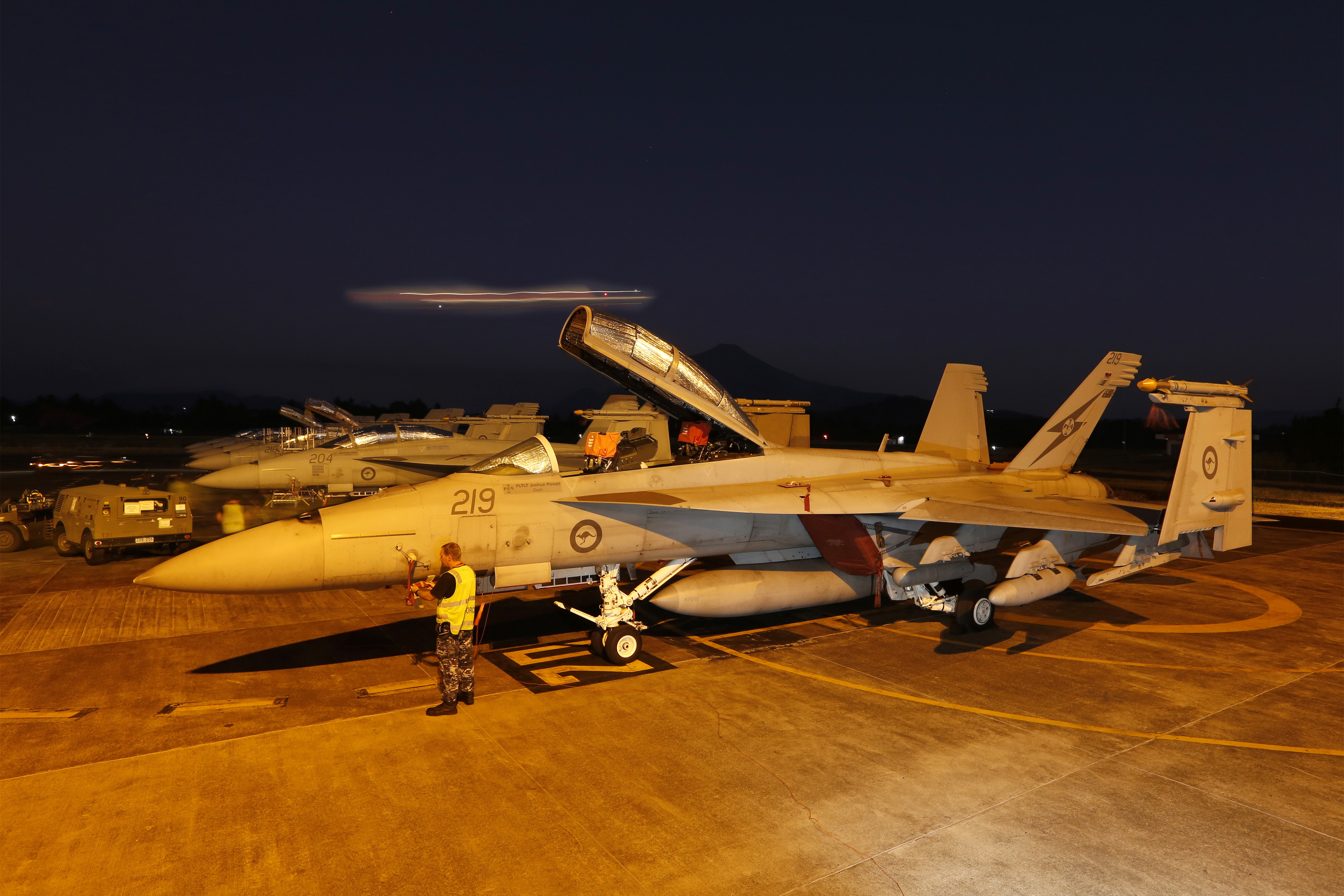Two Royal Australian Air Force aviators ejected safely from their F/A-18F Super Hornet fighter jet after an aborted takeoff at RAAF Base Amberley today. Video and photos of the incident show that the jet came off the runway and seemed to have ended up with some damage to its nose gear.
The Super Hornet, which some sources have identified as serial number A44-223, was preparing to depart Amberley on a north-south axis on the afternoon of December 8, local time, when the accident occurred. It was reportedly the third aircraft within a group of around seven jets that were leaving for a training exercise. The Australian Department of Defense confirmed that both of the crew members are safe and that no other personnel were involved in the incident.
“Defence [the Australian Department of Defence] will provide more information once the immediate actions associated with the incident are completed,” a spokesperson for the Department told Australia’s ABC. “The cause of the incident is not known at this time and will be subject to investigation.”
One eyewitness told the Sydney Morning Herald that, as it got close to the end of the runway, the jet involved in the mishap “appeared to suffer some kind of engine failure,” but this cannot currently be confirmed. Onlookers said they saw the crew eject from the Super Hornet as it was about to take off and two parachutes can be seen deployed in a video, seen below, that subsequently emerged online.

The video also shows that the Super Hornet, which wears the markings of the Royal Australian Air Force’s No. 6 Squadron on its tail, carrying an AIM-120 AMRAAM air-to-air missile under each wing, as well as a single AIM-9X and air combat maneuvering instrumentation pod in addition to two external fuel tanks. It’s not clear from the footage if the missiles were live.
An additional image that appeared on social media of the aftermath of the accident shows scorch marks from the ejection seats on the sides of the forward fuselage of the Super Hornet, while the nose gear has either collapsed or sunk into the ground, with the jet ending up in a nose-down attitude on the side of the runway. Crash tenders are also seen on the scene, which is standard procedure, and there are no indications that there was any fire.
Australia has a fleet of 24 F/A-18Fs, all based at Amberley. This fleet achieved full operational capability in December 2012 and the jets have since participated in combat missions including Operation Okra, the Australian Defense Force’s contribution to operations over Iraq and Syria.

In addition, the Royal Australian Air Force operates 12 EA-18G Growler electronic attack aircraft, one of which was involved in a serious incident at Nellis Air Force Base, Nevada, in January 2018. On that occasion, the Growler burst into flames and skidded off the runway. You can read more about the causes of that incident here.
At this time, the cause of today’s Super Hornet incident is still unknown, but we will update this story as more information becomes available.
Update, 11:35pm: According to Andrew Greene, Defence Correspondent for Australian national broadcaster ABC, Australia’s Chief of Air Force, Air Marshal Mel Hupfeld, has confirmed that the entire RAAF F/A-18F Super Hornet and EA-18G Growler fleets have been grounded pending an investigation into the incident at Amberley.
Contact the author: thomas@thedrive.com
